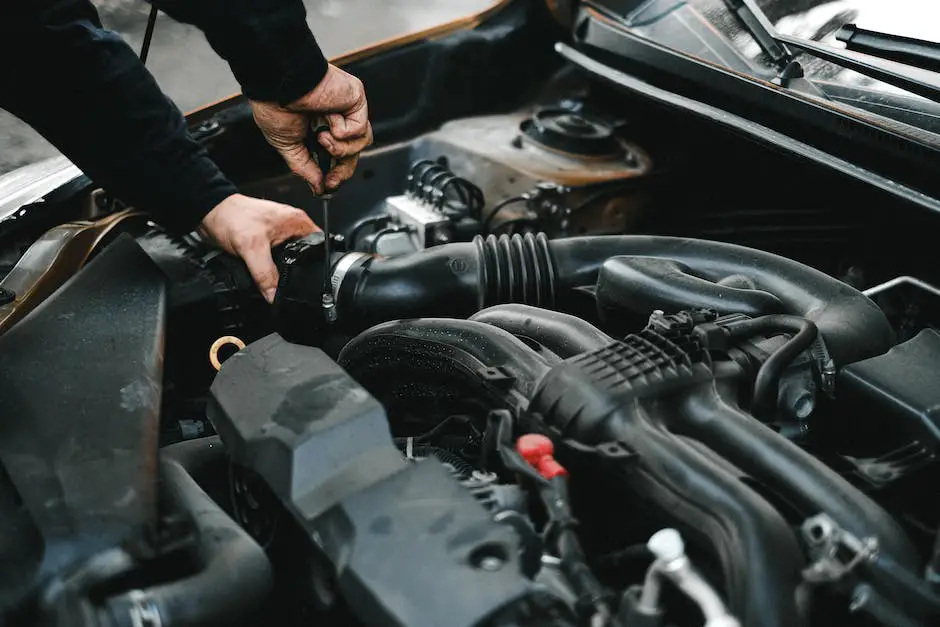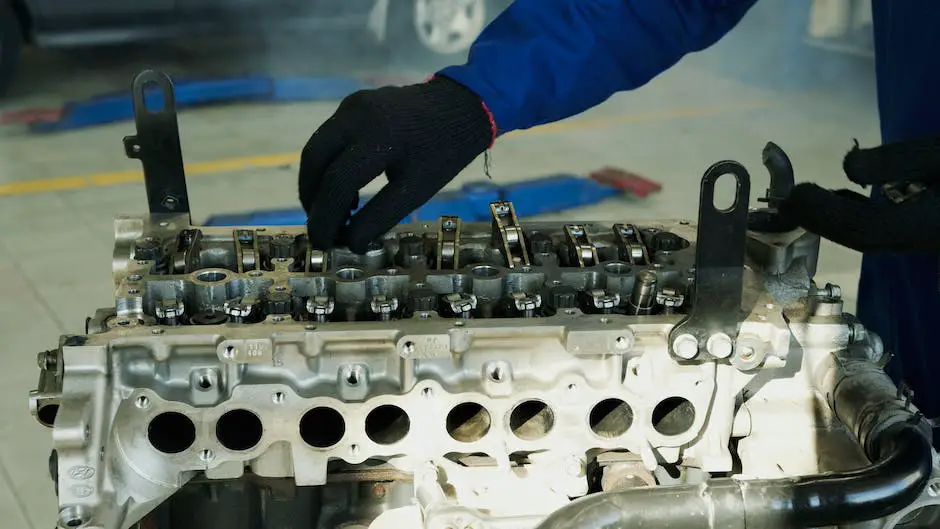Whether we own a car as a necessity or a luxury, we all dread those silent killers that lurk within the complex machinery of our vehicles. Unseen and unheard, they inch their way into the mechanical core, bringing disturbing news of malfunction and repair. One such common but unnoticed issue that Chevrolet Cruze owners might confront is the OBD-II diagnostic trouble code P0299. This issue, related to turbocharger or supercharger underboost condition, can subtly affect the vehicular performance while indicating potential damage to the turbocharger unit. So, as a responsible vehicle owner, what can you do about it? Well, getting an accurate bearing on such problems is a logical first step, which involves understanding what exactly P0299 is, what causes it, how to diagnose and fix it, and most importantly, how to prevent it from recurring.
The Meaning of the P0299 Code
Unraveling the P0299 Code: Causes and Implications for Vehicles
When it comes to automotives, understanding the complex world of OBD-II trouble codes can feel like learning a new language. One such code, distressingly familiar to both car enthusiasts and everyday drivers, is the P0299. Today, we’ll rip into the heart of this error code, explaining why it occurs, its repercussions, and ways to address it.
P0299, in plain language, is your vehicle’s way of saying “low turbo/supercharger boost.” In the intricate orchestra of vehicular components, the turbocharger or supercharger plays a pivotal role of delivering the extra oomph and making our rides zippy and responsive. When the Engine Control Unit (ECU) detects inadequate boost from these components, the P0299 code is triggered.
The root causes of this underboost condition can range from component wear and tear to systemic issues. Here are a few significant culprits:
- Faulty Turbo/Supercharger: Continued exposure to high heat and pressure degrades these components over time. The wear may result in minor leaks or reduced efficiency, manifesting as a P0299 code.
- Mishaps in the Air Intake System: An air leak or clogging in the air intake system can cause insufficient turbo boost. Damaged hoses, faulty sensors within the system, or an obstructed air filter may reduce airflow, interfering with optimal operation.
- Faulty Diverter Valve: In turbocharged systems, the diverter valve or blow-off valve releases extra pressure. If this critical valve malfunctions, the turbo might underperform, and the P0299 could be set.
- EGR Valve Issues: The Exhaust Gas Recirculation (EGR) valve helps in lowering the engine’s combustion temperature, mitigating harmful emissions. If it fails or gets blocked, it may affect the turbocharger’s performance.
There are also instances where the P0299 code pops up due to software issues in the ECU. An outdated calibration can misinterpret data from various sensors, resulting in false triggers of the P0299 code.
Addressing the P0299 isn’t a one-size-fits-all endeavor. Once your vehicle flags this code, it’s advisable to perform a thorough inspection to trace the source of the problem. Start with a visual walkthrough of the turbo/supercharger for visible signs of damage and then work your way down to the related components. Software checks should typically follow the hardware examination.
While small fixes like replacing a hose or an air filter can be accomplished by DIY-savvy vehicle owners, it’s often best to leave larger issues to professional hands. Turbo/supercharger replacement or ECU software tweaks, for instance, fall into this category. Never hesitate to seek professional auto technician services when unsure of the scale or complexity of the problem.
With a blend of vigilance, purposeful maintenance, and swift, effective troubleshooting, grappling with the P0299 error code becomes less intimidating. While this level of granular understanding isn’t essential for the average car owner, knowledge undoubtedly enhances our respect for the marvelous machines we drive, adding a layer of control and competence to our interactions with them.

Common Causes of the P0299 Code
Further Talking Points on the P0299 Code in Chevy Cruze
Delving into the nitty-gritty of the P0299 code, there are some additional elements one can consider to tackle this vexing issue successfully. Emphasis is already on common causes like faulty turbo/supercharger, air intake system issues, problematic diverter valve, and EGR valve issues, but some triggers may need more attention than others.
A critical and often overlooked trigger of the P0299 code is a damaged intercooler. Hidden beneath your Chevy Cruze’s surface, the intercooler serves to cool the air compressed by the turbo/supercharger. It’s crucial to keep the intake air temperature within the optimal range. If the intercooler gets a puncture or leaks, the P0299 could surface. Diagnosing this involves a pressure test of the system, which is a slight step up in complexity compared to visual inspections.
Other triggers might include the turbocharger wastegate solenoid. This valve helps control the boost pressure in the turbocharger system. If it malfunctions, it will not thoroughly regulate the boost pressure, causing the compressor to underperform and trip the P0299 code.
Another consideration is the manifold absolute pressure (MAP) sensor, a device that detects the amount of pressure in the intake manifold. The ECU uses this information to balance the air-fuel ratio. If the MAP sensor reads incorrectly, it might cause the engine to perform sub-optimally, possibly triggering the dreaded P0299 code.
Moving to more subtle issues, sensors that report invalid data can cause the ECU to act conservatively, causing underboost conditions. While software issues were highlighted before, it’s worth noting that even minor sensor issues could make the ECU poorly regulate boost pressure, leading to the P0299 error.
When encompassing these triggers into your diagnostics process, always start with the easiest-to-reach components and gradually work your way to more remote and complex parts. Utilize technology and available tools to pinpoint the problem source accurately. Early adoption of advanced troubleshooting tools, like OBD-II scanners with freeze frame data and live streaming capabilities, can significantly enhance your diagnostic process’s efficiency.
When all else fails, achieving a technology-fueled resolution often means turning to reprogramming the ECU. In some instances, it is not the hardware but the car’s software that needs correct calibration. Updating the ECU software can optimize the turbocharger function, allowing it to work in harmony with other vehicle components and eliminating the P0299 code.
Lastly, while technology provides us with excellent tools for diagnostics and repair, it also demands us to respect its limitations. Technically complex issues, especially when they involve potential reprogramming of electronics or replacement of substantial components, should be paid due consideration of seeking professional assistance.

Steps to Diagnose and Fix P0299
Title: Navigating the P0299 Code Resolution in a Chevy Cruze So you’ve got a P0299 code in your Chevy Cruze. You’ve done all the preliminaries, scoured through the possible culprits, from a malfunctioning supercharger to a faulty ECU, and even addressed them. Well done! What if the code persists? In the tech-infused universe of contemporary vehicle diagnostics, we need to delve further. Let’s investigate a few surplus issues that could throw a P0299 code.A damaged intercooler could be impacting the efficiency of the turbocharger or supercharger, thereby resulting in a P0299 code. Be sure to thoroughly check for any leaks or breaks in the intercooler system.
The turbocharger wastegate solenoid controls the amount of boost produced by the turbocharger. If this solenoid were misbehaving, it might limit the turbocharger’s function, causing insufficient boost and leading to a P0299 code.
Don’t neglect the Manifold Absolute Pressure (MAP) sensor. This sensor measures the pressure in the manifold and outputs this information to the ECU. If the MAP sensor is faulty, it could falsely show low pressure, leading to a P0299 code.
It’s also worth considering false readings from other sensors. If they are providing invalid data possibly due to wiring issues, it could lead to the ECU misinterpreting these readings as a low boost problem.
Even in an era where tech-savvy car enthusiasts like us are taking more vehicle maintenance tasks into our own hands, the use of accurate diagnostic tools to identify and rectify problems becomes imperative. High tech OBD-II scan tools with reset functions or mobile apps connecting to a scanner can help not only read but engage in clearing the fault codes.
In uniquely tricky situations where clearing the P0299 code has become an uphill battle, reprogramming the ECU might be a solution. Software glitches are occasionally to blame for persistent trouble codes, and a fresh update to the ECU software can swiftly get rid of such quirks.
Pondering the DIY approach’s limits becomes crucial in such scenarios. It’s important to find a balance between DIY fixes and seeking professional assistance. While it’s empowering to solve issues independently, it’s equally essential to recognize when a problem is beyond personal expertise. If clearing the P0299 code remains stubbornly elusive, do consider consulting a seasoned professional mechanic.
Innovation can be disruptive, but let’s not forget that it’s here to make our lives easier. Embracing technology, from onboard diagnostics to utilizing hi-tech tools, simplifies the process of troubleshooting modern vehicles. As an integral part of our daily life, understanding and managing these innovations is essential—not just for the tech enthusiasts—but anyone who seeks competence in the driver’s seat.
Regular vehicle maintenance paired with the knack for problem-solving using technology creates a potent combo for any true gearhead. So, let’s gear up, face the challenges head-on, and resonate with the spirit of innovative vehicle management.

Preventing P0299 Code Recurrence
Avoiding the Recurrence of the P0299 Code in Chevy Cruze: Sustainable Solutions
For tech enthusiasts or DIY mechanics who have gotten their hands dirty with the complexities of a Chevy Cruze, recurrence of the P0299 code can be a familiar nightmare. But fear not, technology and keen understanding of the issue can come into play to turn the tables.
To avoid recurrence of the P0299 code, you have to tread with attention to detail and precision. Ever heard of the preventive maintenance approach in technology management? Well, it chimes quite well with our situation here. Regular vehicle checkups and system diagnostics are key to nipping the problem in the bud.
A damaged intercooler can cause the P0299 code. Hence, getting it checked out regularly to ensure it’s in good condition is a solid preventive measure. If a leak is detected, replace or repair it promptly to avoid the re-emergence of the problem.
The Turbocharger Wastegate Solenoid is another hidden actor in the performance of your Chevy Cruze. Ensure its operational efficiency by examining it for any faults. A broken or unresponsive solenoid needs immediate attention.
The Manifold Absolute Pressure (MAP) sensor sends data to the ECU, aiding in turbocharger operation. Therefore, a faulty MAP sensor can trigger the P0299 code. Routine checks to validate its functionality and data accuracy can help prevent this issue.
Sensors and their data integrity play a crucial role in the vehicle’s performance. Fake readings or false triggers can instigate the P0299 code. Investment in quality OBD-II diagnostic tools can be instrumental in diagnosing these misreadings and identifying imposters. Remember, these tools are not just for fixing the problem—they also serve as an eye within the system against potential troublemakers.
Speaking of software, reprogramming or updating the ECU can help avoid this problem. Updates often come with fixes for glitches that could cause inaccurate reading and incorrect triggering of the P0299 code. Again, having the right diagnostic tool to interface with the ECU is of immense help.
Professional help sometimes is the best way to go. Automotive technicians are trained to pinpoint and address these kind of issues. Their experience and professional diagnostic tools often spot problems that DIY enthusiasts might overlook.
The engagement with technology is not about evading problems, but rather embracing solutions. Understanding the anatomy of your vehicle, maintaining it routinely, and leveraging technology to solve issues plays a significant role not just in preventing the recurrence of the P0299 code, but enhancing your relationship with the car.
So, get inspired. Use this challenge as an opportunity to embrace new learnings, innovative vehicle management, and more importantly, never stop exploring the wonders of technology in automotive excellence. The road to avoidance of the P0299 code recurrence is ready, it’s time to hit the accelerator!

Grasping the nuances of auto-faults and codes like the P0299 can initially appear complex and intimidating. However, when armed with adequate knowledge and understanding, they fit quite neatly into the larger puzzle of vehicular diagnosis and maintenance. As owners, we must constantly remind ourselves that our cars aren’t just machines but an embodiment of sophisticated design and engineering that requires regular care and due attention. By diving into details that might look intimidating at first, such as trouble codes, their causes and solutions, we open ourselves to a world of responsible vehicle ownership. As with the P0299 code in Chevy Cruze, the key lies in understanding the issues at hand, tackling them with appropriate diagnostic methods, carrying out relevant repairs, and adhering to preventive measures, thus ensuring a smoother journey down the road.

Tomas is a retired Chevy Auto Technician that brings decades of hands-on experience and expertise to the table. He’s also a father to two incredible daughters. He enjoys using his knowledge and experience to help you solve and find reliable information on Chevrolet vehicles. Whether it’s troubleshooting engine problems or providing tips for maintenance, Thomas is committed to helping Chevy owners keep their vehicles running smoothly and safely.




